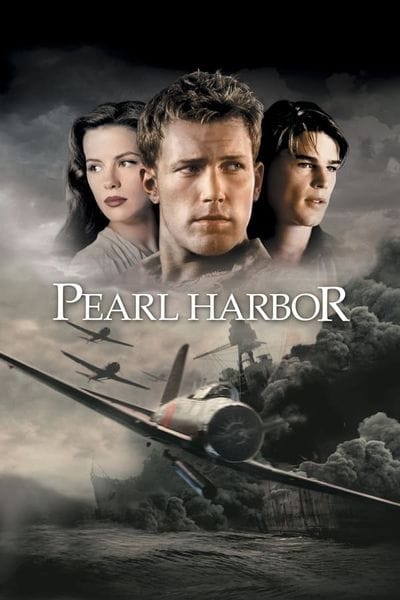Have you ever watched a film and felt a surge of curiosity about the real-life locations that brought the story to life? The movie Pearl Harbor captivates audiences not only with its dramatic storyline and poignant romance but also with its stunning visuals of historical events that transpired during one of the most critical moments in American history. Set against the backdrop of the devastating attack on Pearl Harbor, the film transports viewers to a time of both turmoil and heroism, making it a compelling watch for history buffs and casual viewers alike.
But how faithful are these cinematic portrayals to the actual locations? The film showcases various iconic sites, each imbued with its own historical significance and emotional weight. What relevance do these places hold in the broader narrative of World War II, and how do they enhance our understanding of the events depicted? In this article, we delve into the filming locations of Pearl Harbor, exploring how each site contributes to the film’s authentic atmosphere and enriches the storytelling. We’ll examine the historical context of these locations, the choices made by filmmakers, and how they effectively evoke the spirit of the era, making the film not just a visual spectacle but also a poignant reminder of the real sacrifices made during the war.
City Locations
Pearl Harbor was primarily filmed in three key cities: San Francisco, California; Los Angeles, California; and Honolulu, Hawaii. Each of these locations provided a unique backdrop that enhanced the film’s historical narrative.
San Francisco served as a versatile stand-in for various settings due to its diverse architecture and scenic vistas. The city’s iconic landscapes were visually striking, allowing filmmakers to creatively blend different environments to replicate the ambiance of the early 1940s.
Los Angeles offered both studio space and historical elements, with its extensive film industry infrastructure. Many interior scenes were filmed here, allowing for meticulous control over lighting and production design to achieve the film’s intended authenticity.
Honolulu, the heart of the actual Pearl Harbor, provided the most significant locations tied to the historical events depicted in the movie. The real-life significance of this location enriches the film’s narrative, allowing viewers to connect with the events that shaped American history.
Location Types
The types of locations featured in Pearl Harbor contribute greatly to the film’s immersive experience. Key filming locations included hospitals, ships, airplanes, military barracks, and urban settings, each playing a vital role in conveying the story and emotional weight of the characters’ journeys.
The hospital scenes, for instance, showcased the dramatic aftermath of the attack on Pearl Harbor, with wounded soldiers receiving care. These locations highlighted not only the physical scars of war but also the emotional turmoil experienced by both soldiers and civilians.
Ships and airplanes were crucial for establishing the military context of the film. The portrayal of naval vessels and aircraft during the harbor attack emphasized the scale and intensity of the conflict. These locations also served as platforms for character interactions and development, particularly between Rafe and Evelyn.
Military barracks provided a glimpse into the life of enlisted personnel, offering insights into their camaraderie and the realities of service during a tumultuous time in history. The juxtaposition of these barracks against urban locations reflected the dichotomy of everyday life and the looming specter of war.
Location Styles
The stylistic representation of locations in Pearl Harbor is as important as the locations themselves. The filmmakers used various styles to evoke a sense of time and place, immersing viewers in the early 1940s atmosphere.
The hospital was styled to reflect the wartime medical practices, complete with period-appropriate uniforms and equipment, creating an authentic environment that resonated with viewers.
Ships were depicted with a sense of grandeur and urgency, capturing the scale of naval power and the chaos of battle. The placement of aircraft in the skies above Pearl Harbor during the attack scenes added to the tension and drama, vividly illustrating the horrors of war.
Urban settings depicted bustling life before the attack, providing a stark contrast to the devastation that follows. The filmmakers paid careful attention to period details, helping to transport audiences back in time.
About Pearl Harbor
PPearl Harbor is not just a film; it is a poignant reminder of a pivotal moment in history that forever altered the lives of many. The attack on December 7, 1941, marked the United States’ entry into World War II, a significant turning point that transformed the course of the conflict and reshaped global dynamics.
The film attempts to capture not only the physical battles that occurred on that fateful day but also the deeply personal struggles faced by individuals caught in the turmoil. It delves into the lives of the characters, showcasing their hopes, dreams, and fears as they navigate the chaos surrounding them.
By exploring profound themes of love, sacrifice, and loyalty amid overwhelming adversity, Pearl Harbor seeks to remind us of the immense cost of war and the remarkable endurance of the human spirit. The film portrays not only the heroism of the soldiers but also the emotional toll on their families and loved ones left behind. Each location within the film serves as a symbolic backdrop to these themes, with the iconic harbor itself representing both beauty and tragedy, contributing to a rich narrative tapestry that resonates with viewers on multiple levels.
Pearl Harbor Locations
The authenticity of Pearl Harbor is particularly evident in the careful selection of filming locations. In addition to San Francisco and Los Angeles, specific sites in Honolulu were meticulously chosen to enhance the film’s historical accuracy.
One significant location is the USS Arizona Memorial, which honors the sailors who lost their lives during the attack. While the memorial itself was not used directly in the filming, its presence in the narrative underscores the emotional weight of the events depicted.
The area surrounding Pearl Harbor was also depicted with attention to detail, showcasing the layout of the naval base and the surrounding waters. The decision to film on location allowed for sweeping aerial shots that conveyed the magnitude of the harbor and its strategic importance.
Rafe and Evelyn meet at the hospital scene in Pearl Harbor
One of the pivotal moments in Pearl Harbor occurs when Rafe and Evelyn first meet amid the chaos of the hospital. This scene sets the tone for their relationship, highlighting the intersections of love and duty in times of war.
The location, designed to resemble a wartime medical facility, serves as a poignant backdrop for their initial connection. As they navigate the emotional landscape of fear and uncertainty, the hospital’s sterile environment contrasts sharply with the chaos outside, underscoring the impact of war on personal lives.
This meeting encapsulates the film’s exploration of human resilience amid tragedy, posing questions about love and loyalty in the face of impending danger.
Rafe and Evelyn fall in love scene in Pearl Harbor
As Rafe and Evelyn’s love story unfolds, the locations further enhance the emotional depth of their relationship. The filmmakers carefully crafted scenes filled with tension and tenderness, using iconic backdrops that resonate with the characters’ feelings.
The picturesque settings serve as a canvas for their blossoming romance, allowing the audience to experience the beauty of their love against the backdrop of an impending war. Their moments together illustrate how love can flourish in adversity, representing hope amidst the uncertainty of the times.
Rafe tells Evelyn he is leaving for England scene in Pearl Harbor
The emotional turmoil intensifies when Rafe informs Evelyn of his departure for England. The location of this scene is crucial, as it reflects both characters’ internal struggles.
Filmed against a melancholic sunset, this moment captures the weight of duty clashing with personal desires. The location enhances the tension, showcasing the bittersweet nature of their romance as they grapple with imminent separation.
This scene also highlights the broader themes of sacrifice that permeate the film, showcasing how individuals are often torn between love and duty in wartime.
Evelyn tells Rafe she is pregnant scene in Pearl Harbor
Another critical moment occurs when Evelyn reveals to Rafe that she is pregnant. The location chosen for this reveal plays a significant role in heightening the emotional stakes.
The setting, imbued with intimacy and vulnerability, allows the audience to witness the complexities of their relationship. It exemplifies the juxtaposition of their personal joys against the backdrop of an escalating conflict, underscoring the unpredictable nature of life during wartime.
This scene speaks to the broader narrative of hope and survival, emphasizing the strength found in personal connections even when the outside world is in turmoil.
The final scene in Pearl Harbor
The final moments of Pearl Harbor encapsulate the film’s emotional journey. Filmed in meticulously selected locations that resonate with the characters and themes, the last scene brings closure to their story while honoring the larger historical context.
The significance of location in this film cannot be overstated. Through careful attention to detail, Pearl Harbor immerses viewers in a world that is both familiar and foreign, offering valuable insights into a critical moment in history while reminding us of the enduring power of love and resilience. So instead of terminating abruptly, we see how each location plays an essential role in shaping the narrative and adding depth to the characters’ journeys. As the final credits roll, we are left with a greater appreciation for not only the events of Pearl Harbor but also for the human experience during times of war. So instead of terminating abruptly, we see how each location plays an essential role in shaping the narrative and adding depth to the characters’ journeys. As the final credits roll, we are left with a greater appreciation for not only the events of Pearl Harbor but also for the human experience during times of war.
Conclusion
Pearl Harbor is a powerful portrayal of one of America’s defining moments during World War II, utilizing carefully selected filming locations to enhance its impact and authenticity. The film showcases not only the stunning visuals of the historic events but also the emotional depth of the characters involved. This cinematic piece is a testament to both the director’s artistic vision and the enduring legacy of those who lived through this pivotal moment in history. By delving into themes of love, sacrifice, and loyalty amid chaos, Pearl Harbor reminds us of the personal stories behind the headlines, illustrating how individuals navigated heartbreak and heroism during a time of unimaginable turmoil. Through its rich narrative and compelling performances, the film captures the spirit of resilience that defined a generation.







